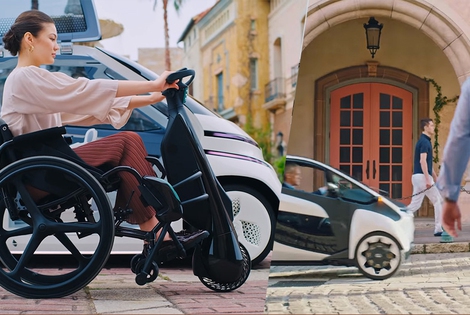
Milan has announced one of Europe’s most ambitious mobility schemes, known as Strade Aperte (open roads). Its goal is to reduce cars in phase 2 of the lockdown by increasing bike lanes and pedestrian areas.
Every day around two thousand cyclists ride the two-way cycling lane that connects Krommenie and Wormerveer, two suburbs of Amsterdam, the capital of the Netherlands. For commuters and students bicycles are the fastest means of transport to get around in this city. From 12th November, a 70-metre stretch of this path will become
Every day around two thousand cyclists ride the two-way cycling lane that connects Krommenie and Wormerveer, two suburbs of Amsterdam, the capital of the Netherlands. For commuters and students bicycles are the fastest means of transport to get around in this city.
From 12th November, a 70-metre stretch of this path will become popular for being the world’s first cycling lane with embedded solar panels. The project is called Solaroad and seems to be the perfect solution for the environment not only because cycling lanes are good for sustainable mobility and have a low environmental impact, but also because it can generate green electricity.
This first experimental stretch cost local authorities around three million euros. Photovoltaic panels are made of crystalline silicon solar cells and covered with a translucent layer of tempered glass. The 70-metre long solar road should be able to meet the electricity demand of three families. Not so much, because panels cannot be adjusted to a position that guarantees the maximum exposure to sunlight and, as a result, high performances, but the project’s purpose is to try to take advantage of an area that otherwise would be merely covered with asphalt.
The goal of this project is to add another 30 metres of solar road by 2016 and then try to convert all roads, even those driven by cars and other vehicles, to solar roadways. According to what the Solaroad’s official website claims, if all US roads were paved with solar panels, the country would produce three times as much energy as it uses today and cut CO2 emissions by 75 percent.
Siamo anche su WhatsApp. Segui il canale ufficiale LifeGate per restare aggiornata, aggiornato sulle ultime notizie e sulle nostre attività.
![]()
Quest'opera è distribuita con Licenza Creative Commons Attribuzione - Non commerciale - Non opere derivate 4.0 Internazionale.
Milan has announced one of Europe’s most ambitious mobility schemes, known as Strade Aperte (open roads). Its goal is to reduce cars in phase 2 of the lockdown by increasing bike lanes and pedestrian areas.
Formula 1, the world’s most important auto racing championship, has decided to turn the page and aim for carbon neutrality with the support of its teams, drivers and the whole racing circus.
Toyota and LifeGate began telling the story of hybrid mobility back in 2006, now, on the road to the Tokyo 2020 Olympics, they’re still treading the path of sustainable mobility. Here are the main steps of the journey.
Germany’s first solar bicycle lane could be the prototype for the roads of the future. The photovoltaic tiles melt snow and ice, and are capable of absorbing noise.
The Vespa is back in an electric version. Production has just started and the first models can be reserved online starting from October.
The city of Utrecht, in the Netherlands, is home to a bridge for cycling and walking that stretches over roof garden of a Montessori school. This project enhances practicality and will allow families to bring children to school by bike, passing through green areas. Despite their functionality, bridges are often seen as an infrastructure that is
The Lego hair bike helmet is the latest Internet craze. For now it’s just a prototype but production on a large scale will probably start soon.
Just as fires often give way to new growth, after the Dieselgate scandal, which saw Volkswagen cheating on US emission rules, the German car manufacturer radically changed course, beginning to focus on sustainable mobility. The German car company aims to propose thirty zero-emission models and produce at least one million battery electric vehicles by 2025. An ambitious mission
Sustainable, two-wheel mobility is triumphing in Copenhagen. After years of investments, policies, and infrastructural changes, bikes now outnumber cars in the city centre. The website Copenhagenize has released data linked to the number of vehicles entering the city centre, which are monitored by the city’s administration on a daily basis. Last year, 265,700 bikes have entered







